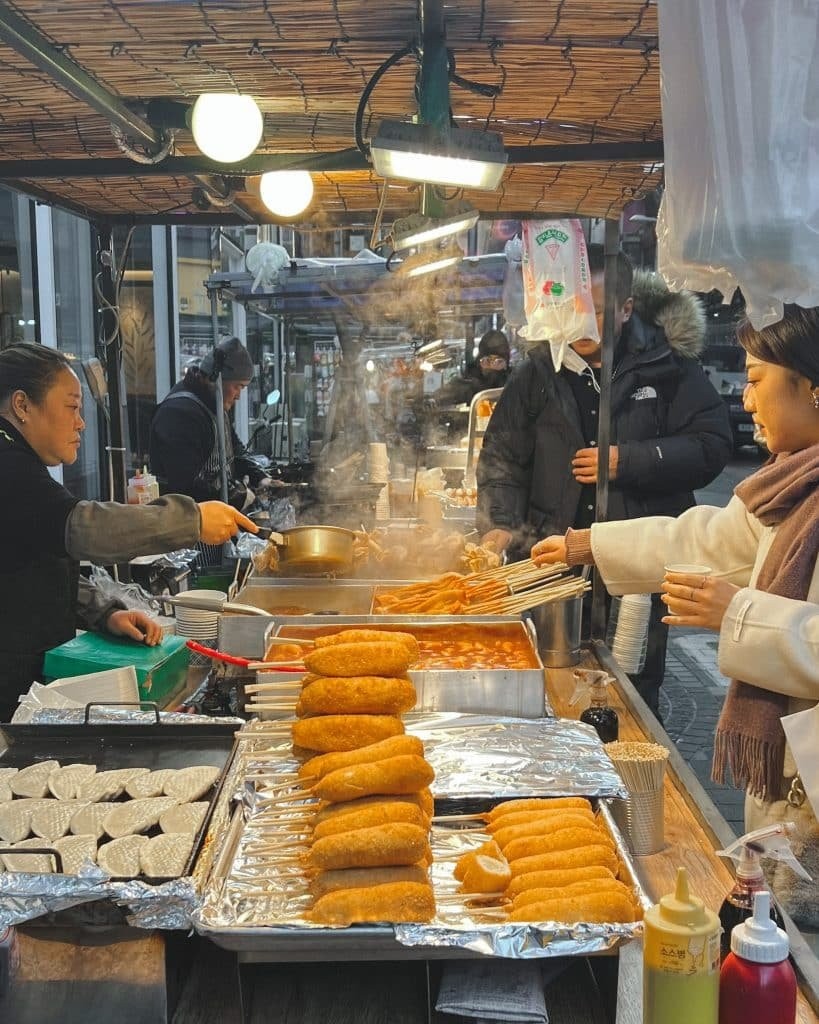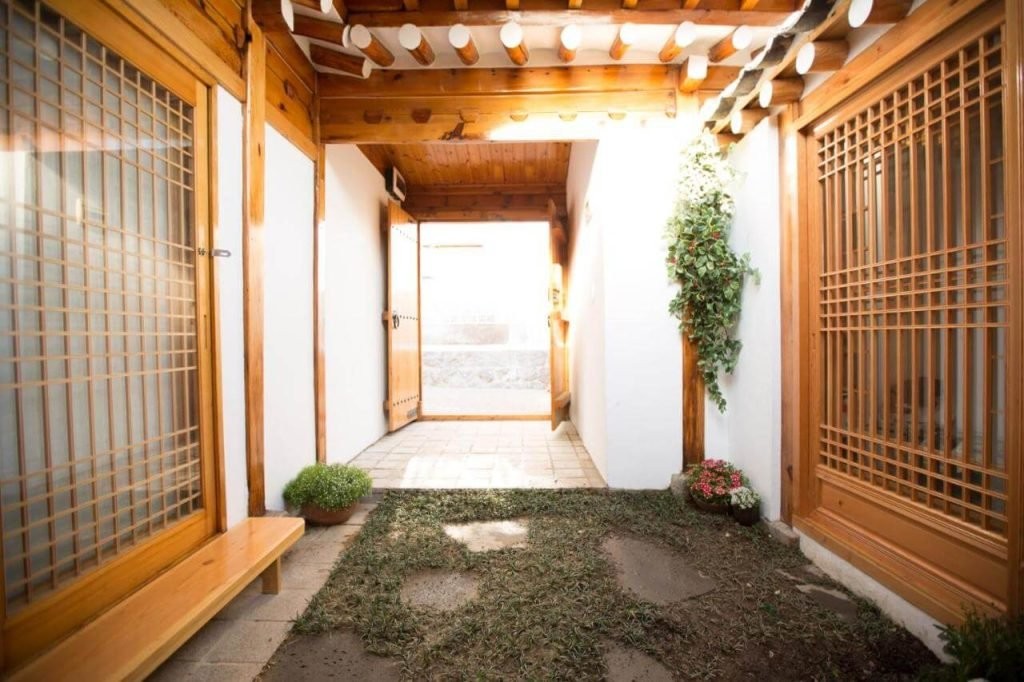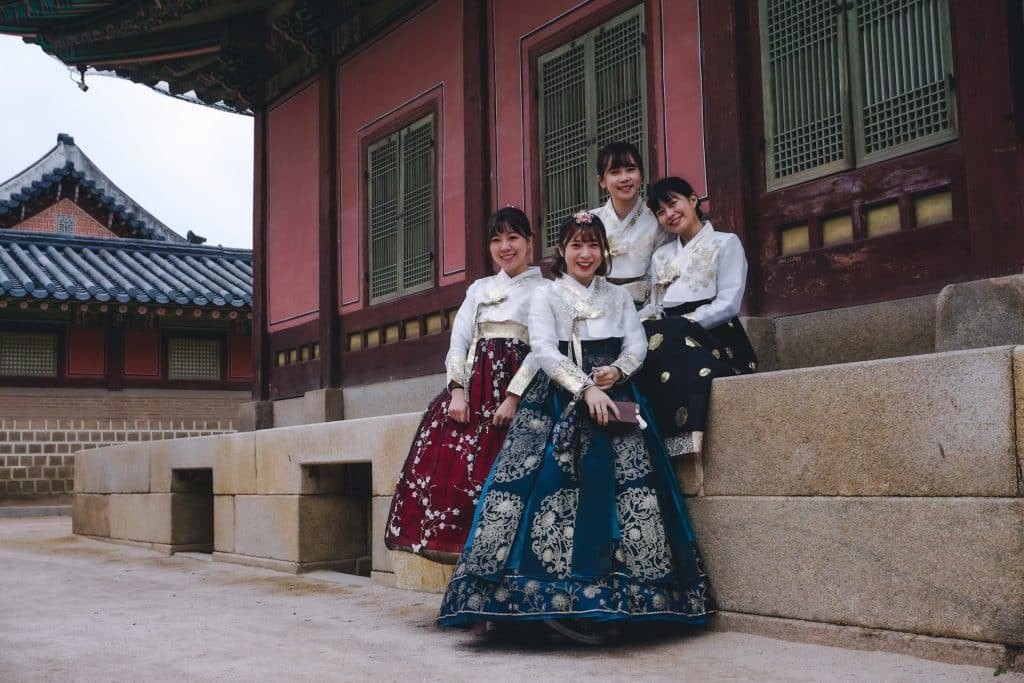Navigating Seoul as a solo traveler can be thrilling, especially when you find the perfect spot to call home base. TRAVELS.EDU.VN understands the need for safety, convenience, and a touch of local flavor. Discover the ideal neighborhoods and accommodations in Seoul for your solo adventure, ensuring a memorable and stress-free experience. We’ll also cover essential travel tips and resources to make your journey seamless, so you can focus on exploring this dynamic city.
1. Seoul: The Perfect Destination for Solo Travelers?
Seoul is increasingly recognized as a fantastic destination for solo travelers, offering a blend of safety, cultural richness, and modern amenities. Its efficient public transportation system, diverse culinary scene, and numerous attractions make it easy for individuals to explore at their own pace. But is it really that great?
1.1 Is Seoul Safe for Solo Travelers?
Seoul boasts a reputation as one of the safest major cities in the world, particularly for solo female travelers. According to the 2023 Safe City Index, Seoul ranks highly in overall safety, including digital, health, infrastructure, and personal security. While petty crime is relatively low, it’s always wise to remain vigilant and aware of your surroundings, especially in crowded areas.
- Personal safety: Low rates of violent crime make it safe to walk around at night.
- Digital security: South Korea has robust cybersecurity measures, reducing the risk of online scams.
- Health security: Excellent healthcare infrastructure ensures access to quality medical services.
1.2 What Makes Seoul Appealing to Solo Travelers?
Seoul’s allure for solo travelers stems from its unique combination of traditional and contemporary attractions, as well as its ease of navigation.
- Excellent Public Transportation: The city’s subway and bus systems are efficient, affordable, and cover most areas, making it easy to get around independently. A T-money card can be a lifesaver.
- Cultural Immersion: From ancient palaces like Gyeongbokgung to bustling markets like Gwangjang, Seoul offers countless opportunities to immerse yourself in Korean culture.
- Modern Amenities: Free Wi-Fi is widely available, and English signage is common in tourist areas, making it easier for non-Korean speakers to navigate.
- Diverse Culinary Scene: Seoul’s food scene is a major draw, with options ranging from street food to Michelin-starred restaurants, catering to all tastes and budgets.
1.3 Addressing Potential Concerns
While Seoul is generally safe and welcoming, some solo travelers might have concerns:
- Language Barrier: While English is spoken in tourist areas, learning basic Korean phrases can enhance your experience and interactions with locals.
- Cultural Differences: Understanding and respecting local customs, such as bowing and removing shoes indoors, is essential for a smooth and respectful visit.
- Crowds: Seoul is a densely populated city, so be prepared for crowds, especially during peak hours and in popular tourist spots.
2. Top Neighborhoods for Solo Travelers in Seoul
Choosing the right neighborhood can significantly impact your solo travel experience in Seoul. Here are some of the best options, each offering a unique vibe and set of amenities.
2.1 Myeongdong: Shopping and Convenience
Myeongdong is a bustling shopping district known for its street food, cosmetics shops, and central location.
- Pros: Excellent public transportation links, a wide variety of dining and shopping options, and a vibrant atmosphere.
- Cons: Can be crowded, especially in the evenings and on weekends.
- Ideal for: Travelers who enjoy shopping, street food, and being in the heart of the action.
- Hotel Recommendation: Hotel Thomas offers a comfortable stay with easy access to the subway and Myeongdong Street.
 Myeongdong street food and shopping district in Seoul, South Korea
Myeongdong street food and shopping district in Seoul, South Korea
Myeongdong, a bustling hub for solo travelers in Seoul, is renowned for its extensive shopping and convenient access to public transport, making it easy to explore the city.
2.2 Gangnam: Trendy and Upscale
Gangnam is known for its upscale shops, trendy restaurants, and vibrant nightlife. The area near the Han River offers a more relaxed atmosphere.
- Pros: Modern amenities, stylish accommodations, and a wide range of dining and entertainment options.
- Cons: Can be more expensive than other neighborhoods.
- Ideal for: Travelers who enjoy luxury, fashion, and nightlife.
- Hotel Recommendation: Patio 7 Hotel is a trendy design hotel offering a comfortable and stylish stay.
2.3 Hongdae: Youthful and Artistic
Hongdae is a vibrant district known for its artsy vibe, indie music scene, and youthful energy.
- Pros: Affordable accommodations, lively nightlife, and a wide range of entertainment options.
- Cons: Can be noisy and crowded, especially on weekends.
- Ideal for: Travelers who enjoy music, art, and a lively atmosphere.
- Accommodation Options: Look for guesthouses and hostels offering private rooms for solo travelers.
2.4 Insadong: Traditional and Cultural
Insadong is a charming district known for its traditional crafts, tea houses, and art galleries.
- Pros: Cultural attractions, unique shopping experiences, and a peaceful atmosphere.
- Cons: Fewer nightlife options compared to other neighborhoods.
- Ideal for: Travelers who are interested in Korean culture and history.
- Accommodation Options: Consider staying in a traditional hanok (Korean guesthouse) for an authentic experience.
2.5 Bukchon Hanok Village: Authentic Korean Experience
Bukchon Hanok Village offers a unique opportunity to stay in a traditional Korean house.
- Pros: Authentic cultural experience, beautiful surroundings, and proximity to cultural attractions.
- Cons: Limited modern amenities and can be more expensive.
- Ideal for: Travelers seeking a unique and immersive cultural experience.
- Hanok Stay Recommendation: Bukchonae offers a fantastic location and beautiful traditional accommodations.
 Traditional Hanok houses in Bukchon Hanok Village, Seoul
Traditional Hanok houses in Bukchon Hanok Village, Seoul
Staying in a traditional Hanok like Bukchonae provides solo travelers with an authentic cultural experience in Seoul, located near many attractions.
3. Essential Tips for Solo Travelers in Seoul
Navigating Seoul as a solo traveler can be both exciting and rewarding. Here are some essential tips to ensure a smooth and enjoyable trip.
3.1 Transportation Tips
- T-Money Card: Purchase a T-money card for easy access to public transportation. You can recharge it at subway stations and convenience stores. A T-money card typically costs around KRW 2,500 (€2/$2) and can be recharged with cash.
- Naver Map/Kakao Map: Download Naver Map or Kakao Map for navigation, as Google Maps is not as reliable in South Korea. These apps provide accurate information on public transportation routes and real-time updates.
- Kakao Taxi: Use the Kakao Taxi app to book taxis. It offers a convenient way to hail a cab, especially in areas where it’s difficult to find one on the street.
- Airport Transfers: Consider using the AREX (Airport Railroad Express) train for a fast and affordable transfer between Incheon Airport and Seoul Station. The express train takes about 43 minutes and costs around KRW 9,000 (€6.50/$7).
3.2 Safety Tips
- Stay Aware: While Seoul is generally safe, always be aware of your surroundings, especially in crowded areas and at night.
- Emergency Contacts: Save emergency contact numbers in your phone, including the police (112) and medical assistance (119).
- Modest Dress: While not mandatory, dressing modestly can help you avoid unwanted attention.
- Avoid Trouble: As with any city, avoid getting involved in potentially dangerous situations, such as excessive drinking or confrontations with strangers.
3.3 Cultural Etiquette
- Respect Elders: Show respect to elders by bowing slightly and using polite language.
- Remove Shoes: Take off your shoes when entering someone’s home or a traditional guesthouse.
- Two-Handed Giving: When giving or receiving something, use both hands as a sign of respect.
- Tipping: Tipping is not customary in South Korea.
3.4 Communication Tools
- Google Translate: Download Google Translate for translating menus and communicating with locals who may not speak English. The app’s real-time translation feature can be a lifesaver.
- Learn Basic Korean: Learning a few basic Korean phrases, such as “hello” (annyeonghaseyo) and “thank you” (gamsahamnida), can enhance your interactions with locals.
3.5 Budgeting Tips
- Street Food: Enjoy affordable and delicious street food at markets like Gwangjang Market.
- Convenience Stores: Utilize convenience stores for budget-friendly meals and snacks.
- Free Activities: Take advantage of free attractions, such as the Korean National War Museum and many of Seoul’s parks.
- Discount Passes: Consider purchasing a Discover Seoul Pass for access to multiple attractions at a discounted price. A 24-hour pass costs around KRW 50,000 (€36/$37) and includes access to 71 attractions.
4. Must-See Attractions for Solo Travelers
Seoul offers a plethora of attractions that are perfect for solo exploration. Here are some must-see spots that cater to a variety of interests.
4.1 Historical Sites
- Gyeongbokgung Palace: The largest of Seoul’s five grand palaces, Gyeongbokgung Palace offers a glimpse into Korea’s royal history. Entrance fee is around KRW 3,000 (€2/$2). Wearing a hanbok (traditional Korean dress) grants you free admission.
 Gyeongbokgung Palace, Seoul, South Korea
Gyeongbokgung Palace, Seoul, South Korea
Exploring Gyeongbokgung Palace offers solo travelers a rich experience in Korean history and culture, enhanced by its stunning architecture.
- Bukchon Hanok Village: Wander through the traditional Korean village of Bukchon Hanok, with its well-preserved hanoks and charming alleys. There is no entrance fee, but remember to be respectful as it is a residential area.
- War Memorial of Korea: Learn about the Korean War at the War Memorial of Korea, which features exhibits on military history and equipment. Admission is free.
4.2 Cultural Experiences
- Gwangjang Market: Indulge in a variety of Korean street foods at Gwangjang Market, a bustling hub of culinary delights. Try local specialties like bindaetteok (mung bean pancake) and mayak gimbap (mini seaweed rolls).
- Insadong: Explore the traditional crafts and tea houses of Insadong, where you can find unique souvenirs and enjoy a traditional tea ceremony.
- Korean Cooking Class: Take a Korean cooking class to learn how to prepare authentic dishes and immerse yourself in Korean cuisine. A highly-rated Korean Cooking Class and Market Tour will allow you to visit a local market and learn to cook four dishes, then enjoy them with different banchan (side dishes).
4.3 Modern Attractions
- N Seoul Tower: Visit the N Seoul Tower for panoramic views of the city. A round-trip cable car ride costs around KRW 14,000 (€10/$10), and the observatory entrance fee is around KRW 10,000 (€7/$7).
- Starfield Library: Explore the stunning Starfield Library in the COEX Mall, a modern architectural marvel and a great spot for book lovers. Admission is free.
- Lotte World: Have fun at Lotte World, a popular amusement park with thrilling rides and entertainment. A one-day pass costs around KRW 62,000 (€45/$46).
4.4 Nature and Outdoors
- Han River Park: Relax and enjoy the scenery at Han River Park, where you can rent a bike, have a picnic, or simply take a stroll along the river. Bike rentals typically cost around KRW 3,000 (€2/$2) per hour.
- Inwangsan Peak: Hike to the summit of Inwangsan Peak for stunning views of Seoul. The hike is relatively easy and takes about 2-3 hours.
5. Day Trips from Seoul
Venture beyond Seoul with these exciting day trip options.
5.1 DMZ (Demilitarized Zone)
Visit the DMZ, the border between South Korea and North Korea, for a fascinating and sobering experience. A Seoul Demilitarized Zone Day Tour typically includes visits to the Joint Security Area (JSA), the Third Infiltration Tunnel, and the Dorasan Observatory. Tour prices range from KRW 80,000 to KRW 150,000 (€58/$59 – €108/$110).
5.2 Nami Island and Garden of Morning Calm
Escape the city with a trip to Nami Island, a picturesque island known for its beautiful scenery, and the Garden of Morning Calm, a stunning botanical garden. A day tour to Nami Island & Garden of Morning Calm typically costs around KRW 50,000 to KRW 100,000 (€36/$37 – €72/$73).
6. Dining Solo in Seoul
Seoul’s diverse culinary scene is a major draw for solo travelers. Here’s how to make the most of your dining experiences.
6.1 Embrace Street Food
Street food is a delicious and affordable way to experience Korean cuisine. Visit markets like Gwangjang Market and Myeongdong for a wide variety of options.
6.2 Explore Local Restaurants
Don’t be afraid to try smaller, local restaurants. Many offer individual portions and are welcoming to solo diners.
6.3 Try Convenience Store Meals
Convenience stores in South Korea offer a surprising array of tasty and affordable meals. Try popular items like kimbap, ramen, and dosirak (lunch boxes).
6.4 Join a Food Tour
Consider joining a food tour to sample a variety of dishes and learn about Korean cuisine from a local guide.
7. Connecting with Others as a Solo Traveler
While traveling solo can be liberating, it’s also nice to connect with others. Here are some ways to meet people in Seoul.
7.1 Join a Tour
Join group tours to explore attractions and meet fellow travelers. Many tour operators offer specialized tours for solo travelers.
7.2 Attend Meetups
Use apps like Meetup to find local events and activities that align with your interests.
7.3 Stay in Hostels
Hostels often have common areas where you can socialize with other travelers.
7.4 Take a Class
Take a cooking class, language class, or other activity to meet locals and fellow travelers.
8. Addressing Common Concerns
Solo travelers often have questions and concerns. Here are some answers to common queries.
8.1 Is It Safe to Walk Alone at Night?
Seoul is generally safe to walk alone at night, but it’s always wise to be aware of your surroundings and stick to well-lit areas.
8.2 What If I Don’t Speak Korean?
While knowing some Korean phrases is helpful, English is widely spoken in tourist areas. Download translation apps for assistance when needed.
8.3 How Do I Deal with Crowds?
Be prepared for crowds, especially during peak hours and in popular tourist spots. Try to visit attractions early in the morning or later in the evening to avoid the biggest crowds.
8.4 What Should I Do in Case of an Emergency?
Save emergency contact numbers in your phone, including the police (112) and medical assistance (119). Know the location of the nearest hospital or clinic.
9. TRAVELS.EDU.VN: Your Partner in Solo Travel Planning
Planning a solo trip to Seoul can be overwhelming, but TRAVELS.EDU.VN is here to help. We offer a range of services to make your travel planning seamless and stress-free.
9.1 Personalized Itineraries
We create personalized itineraries tailored to your interests and preferences, ensuring you make the most of your time in Seoul.
9.2 Accommodation Assistance
We help you find the perfect accommodation for your solo trip, whether it’s a budget-friendly hostel or a luxurious hotel.
9.3 Tour Recommendations
We recommend the best tours and activities in Seoul, based on your interests and budget.
9.4 24/7 Support
We offer 24/7 support to assist you with any questions or concerns you may have during your trip.
Don’t let the challenges of planning a solo trip deter you from experiencing the magic of Seoul. Contact TRAVELS.EDU.VN today for a consultation and let us help you create an unforgettable solo adventure.
Contact Information:
- Address: 123 Main St, Napa, CA 94559, United States
- WhatsApp: +1 (707) 257-5400
- Website: TRAVELS.EDU.VN
Let travels.edu.vn take the stress out of planning, so you can focus on enjoying your solo adventure in Seoul.
10. FAQs About Solo Travel in Seoul
10.1 Is Seoul a good place for first-time solo travelers?
Yes, Seoul is excellent for first-time solo travelers due to its safety, efficient public transportation, and wide range of activities.
10.2 What is the best time of year to visit Seoul?
The best times to visit Seoul are late spring (April-May) and early fall (September-October) for pleasant weather and vibrant foliage.
10.3 How much money do I need for a week in Seoul?
Budget around $700-$1400 USD for a week in Seoul, depending on your accommodation and dining preferences.
10.4 What should I pack for a trip to Seoul?
Pack comfortable shoes, versatile clothing, a universal adapter, and any necessary medications.
10.5 Are credit cards widely accepted in Seoul?
Yes, credit cards are widely accepted in Seoul, but it’s a good idea to carry some cash for street food and smaller establishments.
10.6 What are some popular Korean dishes I should try?
Try bibimbap, bulgogi, kimchi jjigae, tteokbokki, and Korean fried chicken.
10.7 How do I use the subway in Seoul?
Purchase a T-money card, use Naver Map or Kakao Map for directions, and follow the signs in English and Korean.
10.8 What are some etiquette tips for visiting temples in Seoul?
Dress respectfully, remove your shoes before entering, and avoid taking photos during prayer services.
10.9 What should I do if I get lost in Seoul?
Use Naver Map or Kakao Map, ask for help from locals, or visit a tourist information center.
10.10 Is it easy to find vegetarian or vegan food in Seoul?
Yes, many restaurants offer vegetarian and vegan options. Use HappyCow to find specialized eateries.